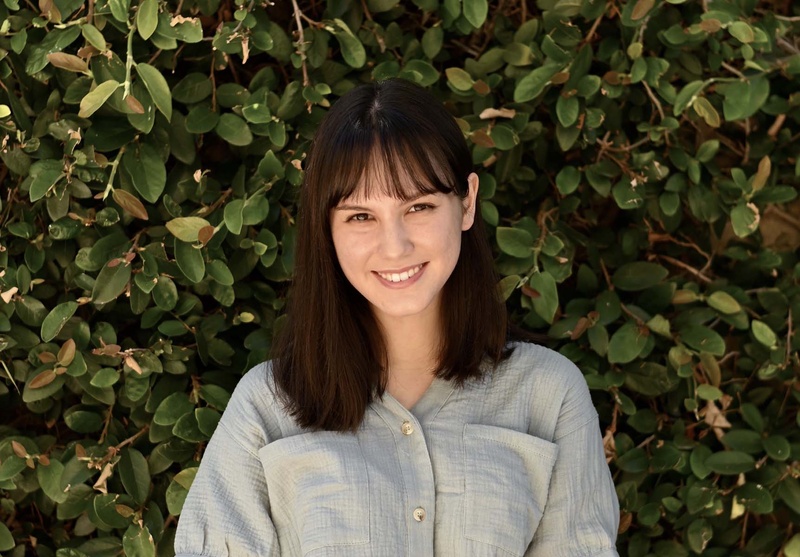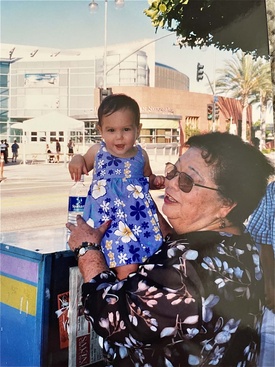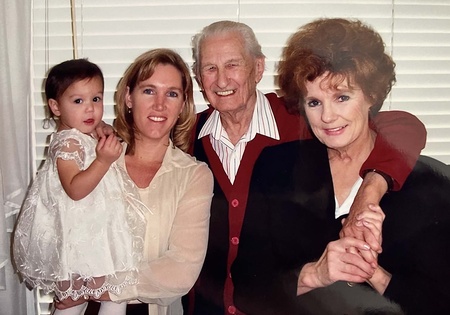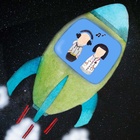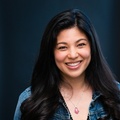Where does talent come from? Is it inherited or learned? Nature or nurture? According to the BBC’s Science Focus, the answer is both. However, “some people are born with greater potential, but without hard work and practicing, their talent will come to nothing.”
This must have been written with Kyra Karatsu in mind. Her grandmother was a long time JANM volunteer and her great-aunt was a talented writer. While they may have paved the path, it’s Kyra who’s taken steps on that path to live up to the family legacy.
Kyra, Yonsei on her father’s side with German ancestry on her mother’s, was born and raised in Santa Clarita, CA. A naturally gifted writer, she’s written numerous articles on the multiracial and Asian American experience for Discover Nikkei and the Rafu Shimpo. Her 2021 Discover Nikkei article “The Commodification of Asian Americans,” was chosen as a topic of discussion on Joshua Trujillo’s podcast, Still Searching. She is a senior at UC Santa Barbara majoring in Communication and aiming for a minor in Professional Writing.
Kyra took time out from her studies to be interviewed via email. Here’s Kyra in her own words:
I read that you were inspired by your grandmother and great aunt to write about your experiences as a mixed Japanese American. Was it through observation of their involvement with JANM or through direct encouragement from them? Implicit or more explicit?
I’d say mostly through observation, so definitely implicit. When I was younger, Grandma Mary used to parade me around the JANM halls. She loved to have tea at the Chado Tea Room, taught me how to fold origami animals, and enjoyed talking to everyone she came across. It really struck me how deeply invested she was in both the mission and the people at JANM. I’d have to say that her passion left a lasting impression on my motivation to write about my mixed/JA experiences.
As for writing, I’m inspired by my great aunt, Sachi Kaneshiro. I have a particularly vivid memory of her book signing event – I remember holding her book in my hands, just fascinated that this was something she had written. I was only six or seven at the time, so the book was way out of my comprehension level, but I’ve read it many times as I’ve gotten older.
She’s since passed, but I love going to the resource center at JANM and finding her book. I’m always amazed at how words can outlive their writer and draw inspiration from her willingness to put her life onto pages.
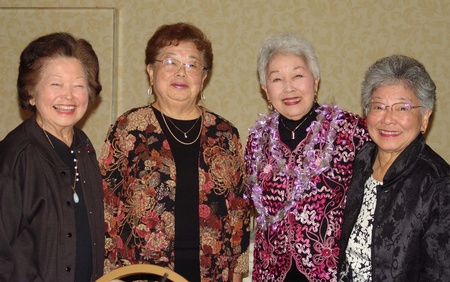
Did participating in Kip Fulbeck’s Mixed: Portraits of Multiracial Kids project at age 8 affect or change your self image?
Yes, it did! Before the project, I didn’t really have a strong sense of what it meant to be ‘mixed’ – I just sort of existed in my own bubble and had little understanding of anything outside of it. The project was my first introduction to people my age who were mixed and helped me to understand my mixed identity just a little better.
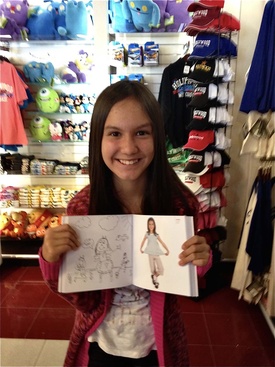
When I was older, I remember going on a trip with my parents and my mom spotted the book at an airport bookstore. That experience made me especially proud to be mixed, as I thought it was the coolest thing to see myself in a bookstore.
A side note! I recently found out that Kip Fulbeck teaches at my university – it’s truly a small world, haha.
You said you spent your childhood growing up in a predominantly white community “trying to act oblivious to my ethnicity.” Feeling ‘othered’ might be a different experience for mixed race kids when one’s ethnicity is not entirely apparent (‘No really, what are you?’). How did acting oblivious work out for you? Was there a point when you started to become more outspoken about your background?
I think that it kind of backfired and made me a little ignorant….Growing up, my default was “White.” I didn’t like to advertise that I was Japanese to my friends so much so that it came to a point where I wanted to change my last name. In grade school, I asked my mom what her maiden name was and started to experiment with using her English-sounding surname instead of ‘Karatsu’ in an attempt to blend in a little better with my classmates.
I also remember filling out questionnaires that wouldn’t allow me to select multiple answers for ‘Race,’ so I would typically select the button for ‘White’ over ‘Asian.’
I think I was largely oblivious as to why I was so motivated to have a preference for ‘White’ over ‘Asian.’ I’m not quite sure when exactly I started to become more outspoken about these experiences, but once I started to get out of my hometown, I was introduced to people who had experiences similar to mine. It made me more aware that what I was experiencing wasn’t anywhere near unique and that, as a multiracial person, I have a say in what I want to share with the world.
Today, I’ve become more interested in understanding how culture is intrinsically intertwined with identity and how experiences such as my own are a product of the culture we live in.
In articles about your two aunt Karens and your two grandfathers, you write about two very different cultural traditions that nonetheless have common threads. Do you feel closer to one set of traditions than the other? (It’s a loaded question, for sure!) Has your mother’s side of the family become more interested in Japanese culture?
It’s taken a long time for me to recognize how I can become at ease with both sides, so I no longer feel closer to one set or the other. My two sides come from different parts of the world, reside in opposite ends of the country, and, generally, have fairly different politics. I think that this has a lot to do with why I’m so interested in ‘common threads’ – it’s, in my opinion, more interesting (and sometimes easier) to spot their similarities than their differences.
As for my mom’s side of the family, I have a hard time saying ‘yes’ – they mostly live in Indiana, so I’m sure it'd be difficult to find anything related to Japanese culture (food, music, etc.) in their daily lives. However, I definitely think that they respect and admire Japanese culture.
The commodification of Asian Americans, as opposed to earlier media stereotyping of compliant, “exotic” women and conniving “sinister” men, is still conflicted. Yes, “it has never been so fashionable to be East Asian” but many still are targets of anti-Asian hate. Thoughts?
I think that these are two extremes that aren’t mutually exclusive. On one end, the commodification of Asian Americans is a reality that’s enlivened by the consumption of today’s popular culture, such as anime or Kpop. On the other end, anti-Asian hate can also be a reality experienced at any given time and may include physical violence and/or hateful remarks.
Both realities can co-exist and even collide under the right circumstances – especially on social media where algorithms create bubbles that isolate and shove individuals into communities motivated by systematic hatred, grotesque idolization, or anything in between. I believe that it should be our responsibility to avoid extremity and, instead, appreciate tolerance, awareness, and commonality.
How do you choose topics for DiscoverNikkei? By assignment? Your essays have already entered a wider discussion through a podcast, in a newspaper and online. How do you see your career in journalism and your volunteerism for JANM developing? Do you see yourself as an activist?
When I’m not assigned a topic, I try to write about anything I’ve been thinking about recently. Whenever an idea comes to me or I hear something interesting, I type it in my phone’s ‘Notes’ app so that I can remember it later. I also do this for anything else I might want to write about, whether it’s a phrase, a word, or a joke.
As for a career and volunteerism, I definitely think I have a long way to go before I’m satisfied with anything I write. I’m more than willing to admit that my essays aren’t at the quality I want them to be at. I’m still in college learning how to become a better writer, persuader, and communicator in hopes that I can refine what I believe in and what I want to write about.
For a similar reason, I don’t consider myself an activist. I don’t know what the future holds, but, for now, I’m just happy to be a sponge, soaking it all in.
It’s readily apparent that Kyra Karatsu isn’t just resting on her family legacy laurels. With a slew of published articles to her credit already, Kyra’s one to watch now and in the future.
© 2023 Esther Newman


